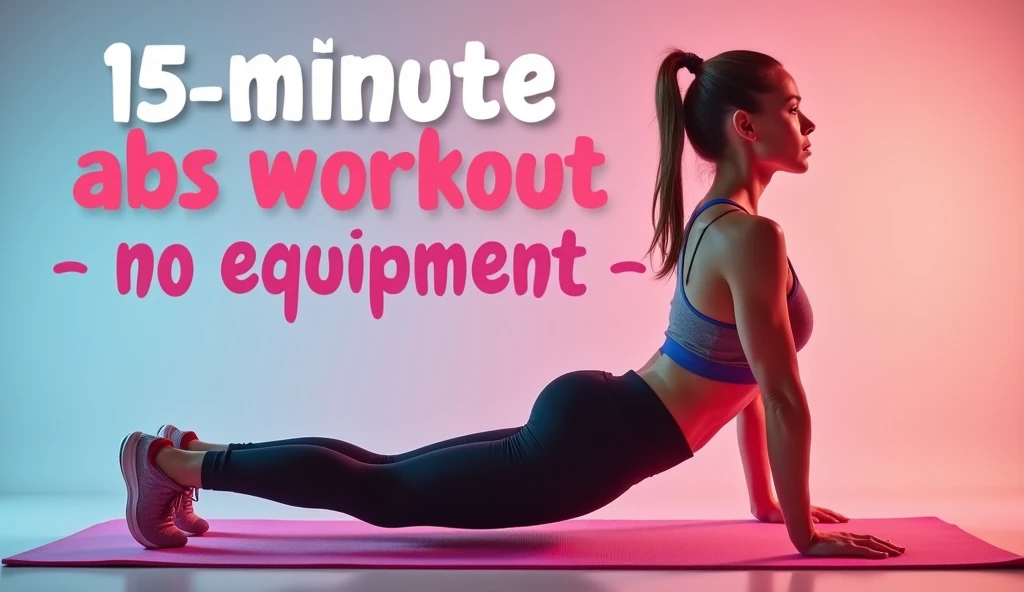Have you ever felt so drained that even the simplest tasks seemed overwhelming? I’ve been there too. Fatigue can creep into our lives, leaving us feeling stuck and unmotivated. But what if I told you that the solution might be simpler than you think?
According to recent insights by Sally Welsh, even low to moderate physical activities can spark significant energy boosts. By increasing endorphins and improving blood flow, exercise acts like a “magic pill” for both your body and mind. It’s not about intense training or hours at the gym—it’s about consistent, simple movements that fit into your day.
Research from the American College of Sports Medicine supports this idea. Regular activity, even on low-intensity days, can transform fatigue into renewed vitality. It’s not just about physical health; exercise also enhances your mood and sharpens your brain. The key is commitment—a steady routine, no matter how small, can lay the foundation for a more energetic life.
Key Takeaways
- Simple exercises can combat fatigue and boost energy levels.
- Regular movement improves both physical and mental vitality.
- Increased blood flow supports oxygen circulation and hormone production.
- Consistency in your routine is more important than intensity.
- Exercise enhances mood and sharpens cognitive function.
Understanding Energy and Exercise
Feeling sluggish and unmotivated? You’re not alone. I’ve been there too, struggling to get through the day. But I discovered that exercise could be the key to unlocking my vitality. It wasn’t about intense training or hours at the gym—it was about small, consistent changes.
My Journey to Better Energy
My turning point came when I decided to incorporate physical activity into my daily routine. I started with just 10 minutes of walking each day. Over time, I noticed a significant shift in my energy levels. I felt more alert, focused, and emotionally balanced.
Studies back this up. Research shows that even short bursts of exercise can boost energy and reduce fatigue. For example, a 2019 review found that 10–30 minutes of movement can improve mood and vitality. This was my experience too—small steps led to big changes.
The Role of Exercise in Everyday Vitality
Exercise isn’t just about physical health; it’s about emotional well-being too. When I started moving more, I felt a sense of accomplishment and joy. This emotional lift, combined with the physical benefits, made a world of difference.
Group fitness settings also played a role. Joining a group class added a social element that kept me motivated. Whether it’s yoga, cycling, or a simple walk with friends, the shared experience enhances the benefits.
| Activity | Duration | Energy Boost |
|---|---|---|
| Walking | 10 minutes | Mild |
| Yoga | 20 minutes | Moderate |
| Cycling | 30 minutes | High |
Scientific findings also support this. Increased heart rate and movement improve oxygen circulation, which directly impacts energy. Even a few minutes of activity can make a difference. The key is consistency—finding what works for you and sticking with it.
The Science Behind Boosting Energy Through Exercise
The science of movement reveals surprising benefits for your vitality. When you engage in physical activity, your body undergoes a series of changes that combat fatigue and enhance your energy level. From endorphin release to improved blood flow, the mechanisms are both fascinating and effective.
Discover the Secret to Fast Weight Loss!

How Exercise Activates Endorphins
One of the most well-known effects of exercise is the release of endorphins. These “feel-good” hormones are produced by your brain during physical activity. They not only elevate your mood but also reduce feelings of fatigue.
A study published in Frontiers in Psychology found that even moderate movement can trigger endorphin release. This explains why a brisk walk or a short jog can leave you feeling refreshed and alert.
The Impact of Increased Blood Flow
Another key benefit of exercise is improved blood circulation. When your heart rate increases, more oxygen is delivered to your brain and muscles. This enhances your overall energy and reduces fatigue.
Research from the University of Georgia highlights that regular physical activity can boost oxygen levels by up to 20%. This is particularly beneficial for adults who often feel sluggish during the day.
Meta-analyses further support these findings. Structured training programs, especially those of moderate intensity, have been shown to significantly improve energy and reduce fatigue. The key is consistency—small changes over time yield lasting results.
Simple Exercises That Can Boost Your Energy
Struggling to stay alert throughout the day? Simple movements can make a difference. Low-intensity workouts and quick movement breaks are effective ways to combat fatigue and enhance your energy. These activities don’t require much time or effort, but their benefits are significant.
Low-Intensity Workouts for Immediate Results
I’ve found that gentle exercises like walking, stretching, or yoga can provide an instant energy boost. A study from the University of Georgia highlights that low-intensity workouts reduce fatigue symptoms by 65%. These activities are perfect for those who feel drained but want to avoid overexertion.
Here are some effective low-intensity exercises:
- Walking: A 10-minute stroll can improve circulation and alertness.
- Stretching: Gentle stretches reduce muscle tension and enhance flexibility.
- Yoga: Combines movement with mindfulness for a dual benefit.
Incorporating Quick Movement Breaks
Short, deliberate movement breaks can interrupt prolonged sedentary periods. I’ve integrated these into my daily routine, and the results are remarkable. Even a few minutes of activity can refresh your mind and body.
Research shows that a walk outdoors is more effective for boosting energy than consuming a sugary snack. It’s a simple yet powerful way to stay active and reduce fatigue.
Try these quick movement ideas:
- Stand up and stretch every hour.
- Take a brisk walk during lunch breaks.
- Use stairs instead of elevators for a mini workout.
These small changes not only reduce fatigue but also improve your reaction to stress. Consistency is key—find what works for you and stick with it.
How to increase energy with exercise
Personalizing your fitness routine can unlock a new level of stamina and focus. It’s not about following a one-size-fits-all plan but tailoring your exercise to your unique needs. This approach ensures that your physical activity aligns with your energy goals and fitness level.
Burn Fat & Boost Your Metabolism!

Designing a Personalized Routine
Creating a routine that works for you starts with understanding your body and energy patterns. I’ve found that breaking down my day into manageable segments helps. For example, a morning walk can set a positive tone, while an evening stretch session can reduce fatigue.
Studies suggest that even 10 minutes of exercise can make a difference. A study from the University of Georgia found that low-intensity workouts reduced fatigue symptoms by 65%. Start small and gradually increase the intensity as your stamina improves.
Adapting Exercises to Your Fitness Level
Whether you’re a beginner or advanced, adapting your routine is key. For beginners, focus on gentle activities like walking or yoga. These movements are easy on the body but effective in boosting energy.
For those with more experience, incorporating strength training or interval workouts can provide a greater boost energy effect. The key is to listen to your body and avoid overexertion, which can lead to fatigue.
Remember, consistency is more important than intensity. Small, regular changes can lead to significant improvements in your energy level over time.
Understanding Exercise Intensity and Duration
Finding the right balance between exercise intensity and duration can transform your energy levels. Too much intensity without proper recovery can lead to fatigue, while insufficient effort may not yield the desired results. It’s about understanding your body and tailoring your routine for maximum benefit.
Finding the Right Balance
I’ve learned that balancing intensity and duration is crucial for sustainable energy. A study from the University of Georgia found that moderate-intensity workouts reduce fatigue symptoms by 65%. This means pushing yourself enough to feel the burn but not so much that you’re drained afterward.
Over time, I adjusted my routine to include shorter, high-intensity sessions and longer, low-intensity activities. This approach keeps my energy levels steady without overwhelming my body. Consistency is key—small, regular changes lead to lasting results.
Here are some practical tips to find your balance:
- Start with low-intensity workouts like walking or yoga.
- Gradually increase intensity as your fitness improves.
- Monitor your body’s response to avoid overtraining.
Overtraining can lead to fatigue and even injury. It’s essential to listen to your body and adjust your routine as needed. For example, if you feel exhausted after a workout, consider reducing the duration or intensity.
Research shows that moderate-intensity activity for 150 minutes per week is ideal for maintaining health. This balance ensures you reap the benefits without risking burnout. Remember, it’s not about pushing to the limit—it’s about finding what works for you.
Incorporating Yoga and Stretching to Enhance Vitality
Yoga and stretching have transformed my daily energy levels in ways I never expected. These practices are more than just physical activities—they’re tools for combating fatigue and enhancing overall health. By focusing on both the body and mind, they offer a holistic approach to vitality.

Benefits of Mind-Body Interventions
Mind-body practices like yoga have been shown to significantly improve energy levels and reduce stress. A study from Johns Hopkins found that gentle yoga can ease discomfort and improve joint flexibility, making it ideal for adults of all fitness levels. These practices also lower stress hormones, which directly impacts your energy and mood.
Stretching, on the other hand, enhances circulation and oxygen flow. This helps reduce fatigue and keeps your muscles relaxed. Whether it’s a quick stretch during a busy day or a full yoga session, the benefits are undeniable.
Yoga: A Beginner’s Approach
Starting yoga as a beginner can feel intimidating, but the rewards are worth it. I began with simple poses like Child’s Pose and Downward Dog. Within weeks, I noticed improved flexibility and a steady boost in my energy level.
Research supports this. A study published in the National Institutes of Health journal highlights that consistent yoga practice balances hormones and improves sleep quality. This, in turn, enhances overall vitality.
Here are some beginner-friendly yoga poses to try:
| Pose | Benefits |
|---|---|
| Child’s Pose | Relaxes the back and reduces stress |
| Downward Dog | Stretches hamstrings and improves circulation |
| Warrior II | Boosts stamina and focus |
Incorporating yoga into a busy schedule is easier than you think. Even 10 minutes a day can make a difference. Start small, stay consistent, and watch your energy soar.
Transforming Fatigue into Energy: Practical Strategies
Ever feel like your workouts are draining you instead of fueling you? I’ve been there. Overtraining can sneak up on you, leaving you more exhausted than energized. Recognizing the signs and adjusting your routine is key to maintaining vitality.
Recognizing and Avoiding Overtraining
Overtraining happens when you push your body beyond its limits without adequate recovery. Common symptoms include prolonged fatigue, irritability, and a drop in fitness performance. I’ve experienced this firsthand, and it’s a clear sign to slow down.
A study published in Psychotherapy and Psychosomatics found that excessive training can lead to chronic fatigue and mood disturbances. Structured recovery periods, on the other hand, can reverse these effects and restore your energy.
Practical Strategies for Balance
To avoid overtraining, I’ve incorporated rest days and lighter workouts into my routine. For example, swapping high-intensity sessions for yoga or walking helps my body recover while still staying active.
Here are some tips to maintain balance:
- Schedule rest days every week to allow your body to recover.
- Listen to your body—if you feel drained, opt for low-intensity activity.
- Incorporate stretching or mindfulness practices to reduce stress.
Research-Backed Recovery
Research from the University of Georgia highlights that moderate-intensity exercise reduces fatigue symptoms by 65%. Structured recovery periods, such as alternating intense and light workouts, can enhance your overall health and energy levels.
| Activity | Intensity | Benefit |
|---|---|---|
| Walking | Low | Improves circulation and reduces fatigue |
| Yoga | Moderate | Enhances flexibility and reduces stress |
| Strength Training | High | Boosts stamina and energy |
By balancing exercise and recovery, you can transform fatigue into sustained energy. It’s not about pushing harder—it’s about finding what works for your body and sticking with it.
Building a Consistent Exercise Routine
Consistency is the secret to unlocking long-term energy and health. Creating a sustainable workout plan doesn’t require drastic changes. It’s about small, daily habits that add up over time. I’ve found that setting realistic goals and using tools like habit trackers can make all the difference.

Creating Daily and Weekly Habits
Start by identifying what works for your schedule. For me, carving out 30 minutes a day for physical activity was a game-changer. A study from the University of Georgia suggests that 150 minutes of moderate exercise per week is ideal for maintaining health. Breaking this into smaller sessions, like three 10-minute walks, can make it more manageable.
Here are some strategies I’ve used to build consistency:
- Set achievable goals: Start with small, measurable targets like walking 10 minutes a day.
- Use habit trackers: Apps or journals can help you monitor progress and stay motivated.
- Schedule workouts: Treat exercise like an important meeting by blocking time in your calendar.
The Role of Habit Formation
Research shows that habit formation is key to maintaining a routine. A study published in Psychotherapy and Psychosomatics found that consistent training reduces fatigue and improves mood. Over time, these habits become second nature, making it easier to stay active even on busy days.
I’ve also found that mixing up activities keeps things interesting. For example, alternating between walking, yoga, and strength training prevents boredom and challenges different muscle groups. This variety not only boosts energy but also keeps me engaged in my routine.
Remember, it’s not about perfection—it’s about progress. Small, consistent steps lead to lasting results.
Lifestyle Adjustments: Sleep, Nutrition, and Stress Management
Balancing sleep, nutrition, and stress is essential for sustained vitality. These lifestyle factors work synergistically with exercise to maximize your energy and overall health. By making small, intentional changes, you can create a foundation for long-term well-being.
Complementary Strategies to Boost Energy
Sleep, nutrition, and stress management are often overlooked but are critical for maintaining high energy levels. A study from the Shaw Cancer Center highlights that poor sleep quality can lead to fatigue and reduced fitness performance. Similarly, the CDC emphasizes the importance of a balanced diet in supporting physical activity and recovery.
Here are some actionable strategies to integrate these adjustments into your routine:
- Sleep: Aim for 7-9 hours of quality sleep each night. Avoid screens before bed and create a calming bedtime routine.
- Nutrition: Focus on whole foods rich in nutrients like magnesium and calcium, which support muscle function and recovery.
- Stress Management: Incorporate mindfulness practices like meditation or deep breathing to reduce stress and improve focus.
Research shows that these lifestyle changes can significantly enhance your energy level. For example, a study published in the National Institutes of Health journal found that participants who improved their sleep and diet reported a 30% reduction in fatigue symptoms.
| Adjustment | Benefit |
|---|---|
| Quality Sleep | Improves recovery and reduces fatigue |
| Balanced Nutrition | Supports physical activity and muscle repair |
| Stress Reduction | Enhances focus and emotional well-being |
By combining these strategies with regular exercise, you can create a holistic approach to boosting your energy. Small, consistent changes in your daily habits can lead to significant improvements in your overall health and vitality.
Conclusion
Taking small steps toward a more active lifestyle can lead to big changes in your daily vitality. Research consistently shows that regular physical activity transforms fatigue into sustained energy. Balancing intensity, duration, and recovery is key to maintaining this momentum.
Personalized routines and lifestyle adjustments play a crucial role. A study highlights that even moderate exercise can significantly improve both mental and physical well-being. By listening to your body and making small, consistent changes, you can build a sustainable routine that supports long-term health.
Reflect on your current habits and consider integrating mindful movement into your day. Whether it’s a short walk or a yoga session, these small steps can lead to a healthier, more energetic life.








Comment on “Simple Exercises to Boost Your Daily Energy”